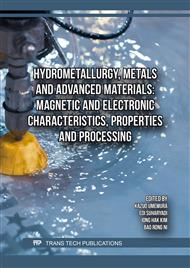p.25
p.33
p.41
p.53
p.59
p.69
p.77
p.87
p.95
Constitutive Modeling of Fibrous Tissues with Non-Symmetric Fiber Dispersion: Application to Extension Behavior of Leather
Abstract:
Leather is a fiber-reinforced material with a more concentrated fiber distribution in three dimensions perpendicular to the tangential plane than in-plane. The asymmetric dispersion of fibers can have a significant effect on the mechanical properties of natural leather. The transverse isotropic constitutive model is unable to accurately describe the anisotropy of natural leather. Accordingly, we have devised a novel anisotropic theoretical framework that incorporates asymmetric fiber dispersion, with the objective of accurately characterizing the mechanical behavior of anisotropy with asymmetric fiber distribution. Our approach entails the incorporation of the Yeoh model into the theoretical framework, as well as the introduction of a specific anisotropy term within the strain energy function, with the objective of describing the nonlinear properties. By fitting the theoretical results of the model to tensile test data of natural leather specimens, the structural and material parameters were determined. We provided specific stress tensors to enable finite element analysis. Our finite element analysis investigates the effect of asymmetric fiber dispersion on the mechanical response under uniaxial and biaxial stretching. By simulating the tensile behavior of natural leather specimens under different tensile angles, we observe a non-homogeneous stress distribution and non-homogeneous deformation due to fiber families under fixed stretching. This theoretical framework based on a continuum model provides a theoretical reference for describing the mechanical properties of leather materials with asymmetric fiber dispersion.
Info:
Periodical:
Pages:
59-65
Citation:
Online since:
June 2025
Authors:
Price:
Сopyright:
© 2025 Trans Tech Publications Ltd. All Rights Reserved
Share:
Citation:


